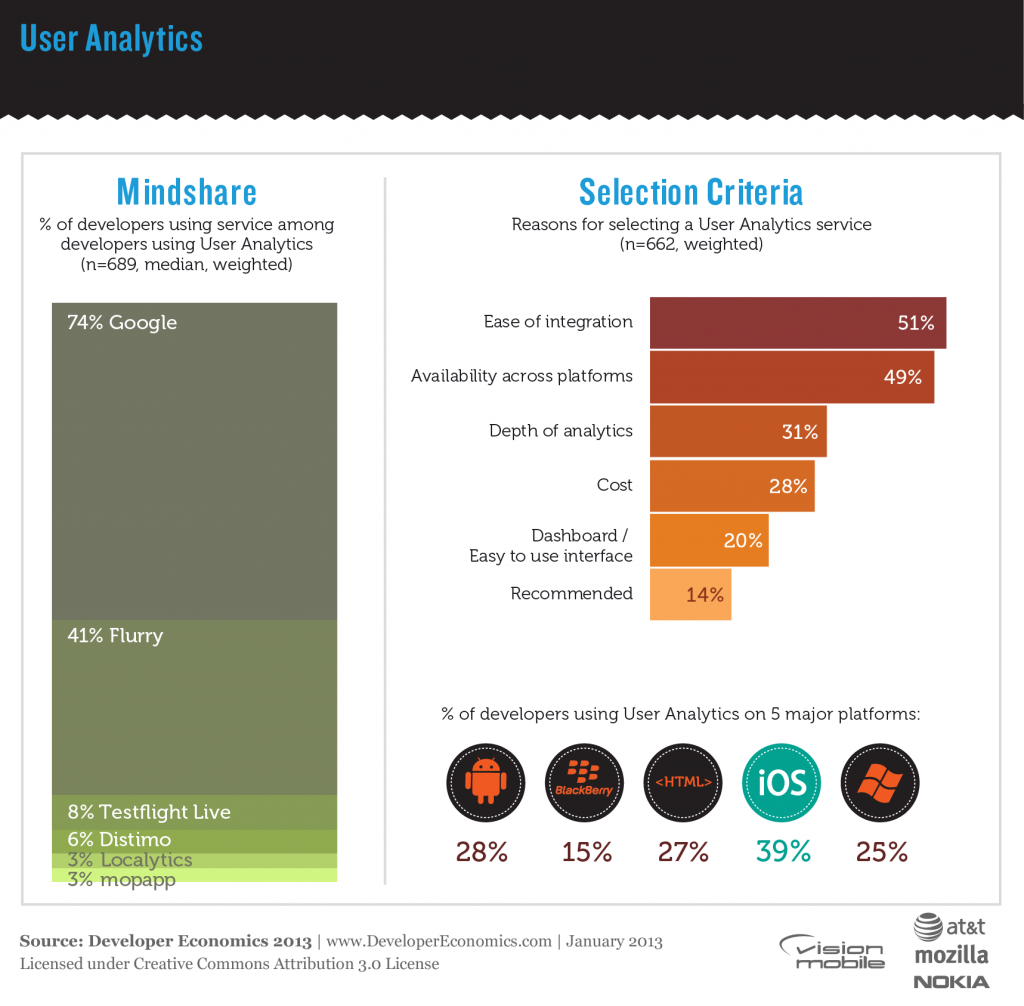One of the most common mistakes developers make when planning the business case for a new app is dramatically overestimating the number of users they will be able to attract, particularly for their first app. The typical argument goes something like this: “My app will be compatible with 400 million devices, if I can reach just 1% of those, that’s 4 million users”. The trap here is that 1% sounds like a very conservative fraction of the installed base to target but in reality it is incredibly high. Of the 664 respondents in our latest survey who integrate user analytics and provided us with their information about the active user base for their most popular app, only 6% had over 500,000 users. The nature of store charts and limited promotional space means that those who break the half million user barrier are quite likely to gain many, many more users than that, however, what’s a realistic figure for everyone else?
One of the more interesting findings we published was that, excluding those with more than 500,000 users, the mean average active user base for iOS developers was 70,000 users vs. 51,000 users on average for Android. The median user base, is 27,500 users for iOS and 15,500 for Android. The percentage difference between means is much smaller than that between medians, suggesting that the distribution of active user bases in general is worth further investigation.
As can be seen from the chart above, 200,000 – 500,000 users is the least common user base size, despite being twice as large an interval as the 50,000 – 200,000 option immediately below it. This suggests that there is a threshold level somewhere near 200,000 users, such that if you break that level you’re likely to “get noticed” and end up with significantly more users. There’s a similar bump near the bottom end of the scale where 501 – 2,000 users is more commonly reported than 2,001 – 5,000 users. This is likely to reflect the difference between apps which are not (effectively) marketed and those that are.
In addition to the platform differences noted above, there are also interesting differences in user base size by revenue model and app category. For example, apps using advertising as a revenue model (and therefore presumably free downloads) are more likely to gain over 50,000 users than other models, whilst freemium shows a very similar distribution to paid downloads. The games category is incredibly competitive and developers there are less likely to have more than 50,000 users, whilst developers in the music and video category had the highest probability of breaking both the 50,000 and 500,000 user barriers. The combinations of revenue models and categories are almost endless but the chart above has dynamic filters so you can explore the opportunities in your own app category. Please let us know about anything interesting you find in the comments below.




